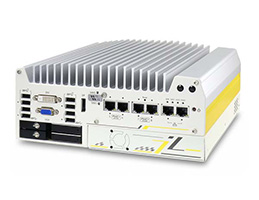Intelligent Transportation Systems
What are intelligent transportation systems? Intelligent transportation systems (ITS) advance transportation safety and mobility, enhance productivity, enforce laws, and help generate revenue by integrating state-of-the-art sensor and communication technologies into vehicles and transportation infrastructure.
ITS Applications
Several different types of ITS applications exist, including automatic license plate recognition (ALPR), traffic monitoring, in-vehicle applications, parking and speed enforcement, railway monitoring, and high-occupancy-vehicle (HOV) lane monitoring. Each application may require different types of cameras, software, and hardware components.
Take mobile, automated parking enforcement systems for example. Deployed in law enforcement officers’ vehicles, these systems scan parked vehicles and their license plates to automatically identify parking violations. Such systems often deploy multiple technologies, including color cameras, GPS, and machine learning software that automatically makes the determinations. All such systems also require a powerful PC capable of running compute-intensive algorithms and processing the vast number of images being captured by the cameras as the system runs.
Speed enforcement applications also require specific hardware and capabilities. For example, cameras and industrial PCs must often be supported by the IEEE 1588 precision time protocol (PTP). IEEE1588 PTP enables cameras to create accurate time stamps on images at the point of exposure while also allowing multiple cameras to execute synchronized image acquisition via internal time-based command. Consider the task of accurately detecting speeding vehicles. Time stamps from two different points on a road can determine whether a vehicle exceeded the speed limit — without the use of radar.


ITS Benefits
ITS systems offer many different benefits, for both local governments and individuals alike. World road and international transportation association PIARC says that the central feature of ITS technology is delivering real-time traffic and travel information, as well as providing a means of network control. ITS systems, according to PIARC, should do the following:
- Meet the accessibility and mobility needs of those living and working in a specific area or using transportation networks
- Offer convenient and affordable transport options making best use of infrastructure
- Manage congestion and incidents to make roads accessible
- Provide a means to limit air pollution and noise from road transport
- Support the economy and the efficient transport of goods and freight
- Provide a tool for implementing transport policies, such as demand management or public transport policy
Safety represents one of the most important capabilities of ITS systems. The U.S. Department of Transportation provides several examples of ITS-related studies, which show that — when designed and implemented correctly — ITS systems can make communities more livable and safer. For instance, automated speed enforcement systems installed in four neighborhood parks in Chicago led to a 65% decrease in speeding incidents. In fact, in the first week of warning notices, each of the nine total cameras identified an average of 507 vehicles speeding at 10 mph or more over the posted speed limit, but by the third week of issuing tickets, the daily average dropped to 175.
Computers are required in nearly all ITS applications, but ordinary consumer PCs will not always suffice. Because ITS applications often involve unpredictable conditions (e.g., in vehicle deployment) or extreme temperatures, systems integrators need reliable, rugged computers capable of deployment into such environments. Many applications also require processing power beyond that of a consumer PC, which often means the use of a graphics processing unit (GPU).






Industrial PCs
Intelligent transportation computers must be rugged, reliable, and capable of handling demanding processing requirements. CoastIPC offers several computer models from leading companies such as Advantech and Neousys. Our components include processors from Intel, AMD, and NXP. We can build industrial PCs ready to go out of the box for your ITS application with options such as fanless design, IEEE 1588 compatibility, rugged IP67 design, and more.
NVIDIA Jetson
CoastIPC carries several industrial PCs that feature NVIDIA’s Jetson edge AI platform. Models include NVIDIA Jetson AGX edge AI computers for intelligent video analytics, NVIDA Jetson Tegra X2 computers with 256 CUDA cores, NVIDIA Jetson Xavier NX computers, and NVIDIA Jetson Nano computers. Contact us today and learn how we can help solve your ITS computing challenges with NVIDIA Jetson technology.




GPU Computers and VPU Computers
For compute-intensive machine vision, robotics, or deep learning applications, CoastIPC can help you build the right GPU computing platform. Products include NVIDIA GPU computers, PCs with dual GPU slots, VPU computers, and other edge AI devices. We can also build custom GPU computers or VPU computers to suit your particular machine vision application needs.
Data Acquisition and Control
Machine vision applications require components beyond industrial PCs, of course. CoastIPC carries several different data acquisition and control components, including frame grabbers, constant current LED controllers, remote I/O modules, converters, switches, and IoT IP nodes.


